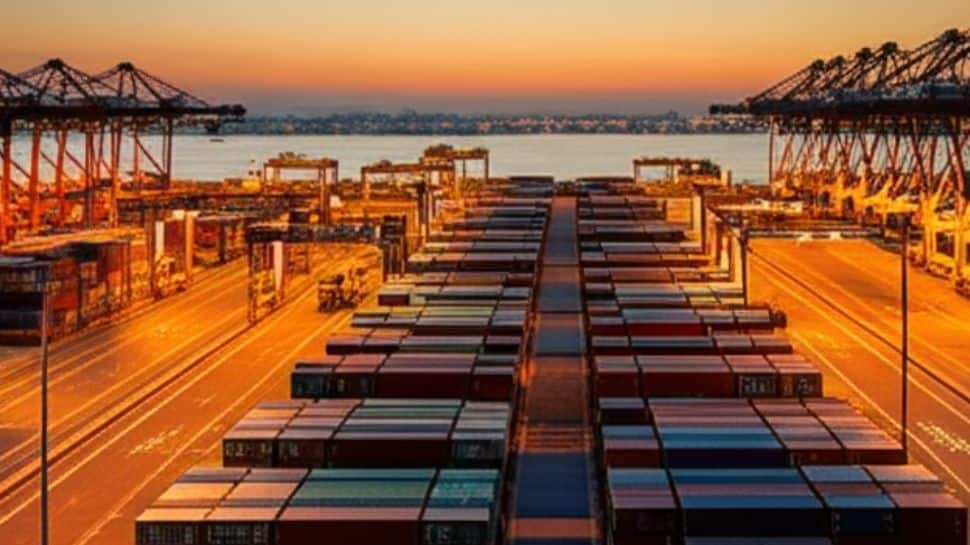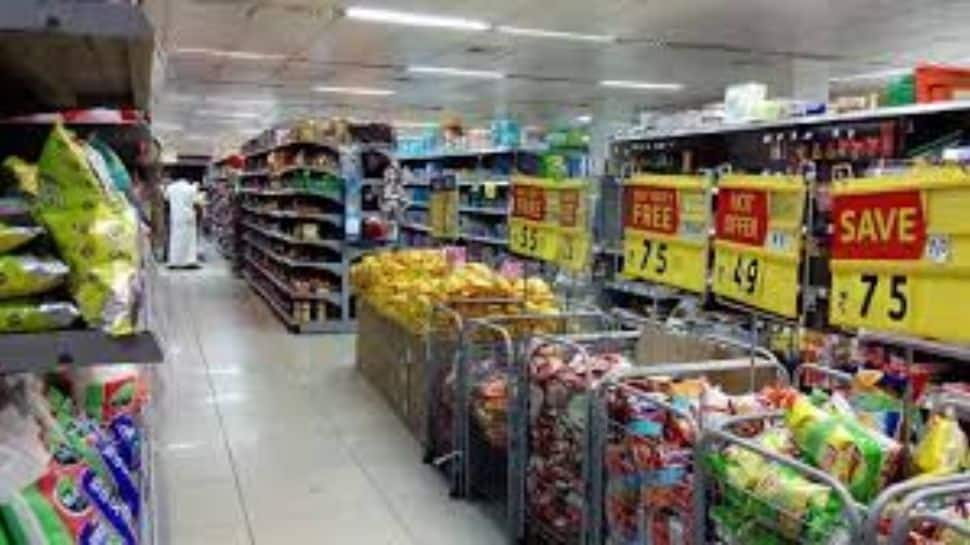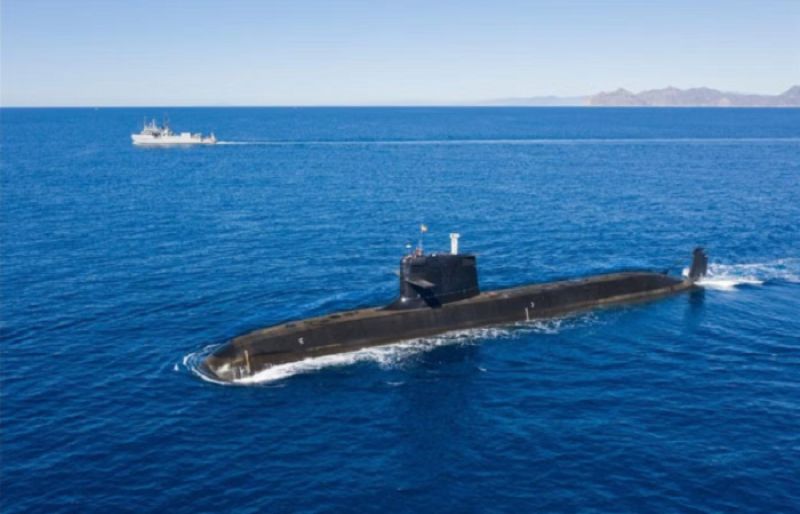Business
Indias MSME Exports In Textiles, Chemicals To Be Hit Most By US Tariffs As They Form Major Part Of Shipments To US: Crisil

New Delhi: Micro, small and medium enterprises (MSMEs) in sectors such as textiles, diamonds and chemicals, which together account for nearly 45 per cent of India’s total exports, are likely to be the most affected by the imposition of higher tariffs by the United States, according to a report by Crisil Intelligence.
The US currently levies an ad valorem duty of 25 per cent on Indian goods, but has announced an additional 25 per cent tariff that will take effect from August 27, raising the total duty to 50 per cent. The report noted that this increase will significantly affect Indian exporters, especially MSMEs, which dominate key export sectors.
The textiles, gems and jewellery, and seafood industries, which together make up about 25 per cent of India’s total exports to the US, are likely to be hit the hardest. MSMEs have more than 70 per cent share in these sectors. In the chemicals sector, where MSMEs account for about 40 per cent share, the higher tariffs will also hurt exporters.
Pushan Sharma, Director, Crisil Intelligence said, “Partial absorption of the increased product prices due to higher tariffs will put pressure on MSMEs, squeeze their already-slim margins and pose a material challenge to their competitiveness. For instance, those into readymade garments (RMG) are expected to lose ground in the US as the tariff increases to 61 per cent, including 50 per cent additional ad valorem duty, compared with peers in Bangladesh and Vietnam tariffed at 31 per cent. The Tirupur cluster, which accounts for over 30 per cent of India’s RMG exports, will be severely impacted as approx. 30 per cent of its exports are to the US.”
In the gems and jewellery sector, Surat’s diamond polishers, who dominate the country’s exports with over 80 per cent share, will also be severely affected. Diamonds form over half of India’s total gems and jewellery exports, with the US being a major consumer, accounting for nearly a third of shipments. Similarly, seafood MSMEs will struggle to compete with Ecuador, which enjoys a lower 15 per cent tariff and is geographically closer to the US.
The chemical industry also faces stiff competition from Japan and South Korea, which face lower tariffs. Auto component MSMEs supplying gearbox and transmission equipment may also feel the heat as the US has a significant approx. 40 per cent exposure in this segment, though overall auto component exports to the US remain limited at 3.5 per cent of India’s production.
Overall, the US tariffs will affect about USD 19 billion worth of exports across textiles, chemicals, seafood and auto components. To mitigate the impact, Crisil mentioned that India could boost exports to other destinations and leverage the India-UK free trade agreement.
Business
OGRA Announces LPG Price Increase for December – SUCH TV

The Oil and Gas Regulatory Authority (OGRA) has approved a fresh increase in the price of liquefied petroleum gas (LPG), raising the cost for both domestic consumers and commercial users.
According to the notification issued, the LPG price has been increased by Rs7.39 per kilogram, setting the new rate at Rs209 per kg for December. As a result, the price of a domestic LPG cylinder has risen by Rs87.21, bringing the new price to Rs2,466.10.
In November, the price of LPG stood at Rs201 per kg, while the domestic cylinder was priced at Rs2,378.89.
The latest price hike is expected to put additional pressure on households already grappling with rising living costs nationwide.
Business
Taxable Value Of Goods Surges 15% In Sep-Oct As GST Cuts Boost Consumption

New Delhi: The taxable value of all supplies under GST surged by a robust 15 per cent during September-October this year, compared to the same period in 2024 due to sharp increase in consumption triggered by the tax rate cuts on goods across sectors that kicked in from September 22, according to official sources.
The growth in the same two-month period last year was 8.6 per cent. “This surge in taxable value during ‘Bachat Utsav’ demonstrates strong consumption uplift, stimulated by reduced rates and improved compliance behaviour,” a senior official said.
He pointed out that the growth has especially been strong in sectors where rate rationalisation was implemented, such as FMCG, pharma goods, food products, automobiles, medical devices and textiles. In these sectors, the taxable value of supplies has seen significantly higher growth, confirming that lower GST rates translated directly into higher consumer spending.
“It vindicates our strategy that reducing rates on essentials and mass-use sectors would create demand-side buoyancy — a Laffer Curve–type demand uplift,” he explained.These trends confirm that GST next-gen reforms have not disrupted revenue stability, and that consumption-side buoyancy has begun to translate into higher taxable value in key sectors.
This growth is in value terms which means that since GST rates were lower, the growth in volume terms will be even higher. It is clearly visible that while the Next Gen Reforms resulted in significant Bachat — increased consumption, industry has been very proactive in passing on the GST savings to the final consumers and ensuring that there is no supply side deficiency.
As GDP private consumption data will be released much later, GST taxable value serves as the most reliable real-time proxy for consumption, and the current numbers clearly indicate sustained demand expansion, the official added.
Business
Private sector data: Over 2 lakh private companies closed in 5 years; govt flags monitoring for suspicious cases – The Times of India

NEW DELHI: The government on Monday said that over the past five years, more than two lakh private companies have been closed in India.According to data provided by Minister of State for Corporate Affairs Harsh Malhotra in a written reply to the Lok Sabha, a total of 2,04,268 private companies were shut down between 2020-21 and 2024-25 due to amalgamation, conversion, dissolution or being struck off from official records under the Companies Act, 2013.Regarding the rehabilitation of employees from these closed companies, the minister said there is currently no proposal before the government, as reported by PTI. In the same period, 1,85,350 companies were officially removed from government records, including 8,648 entities struck off till July 16 this fiscal year. Companies can be removed from records if they are inactive for long periods or voluntarily after fulfilling regulatory requirements.On queries about shell companies and their potential use in money laundering, Malhotra highlighted that the term “shell company” is not defined under the Companies Act, 2013. However, he added that whenever suspicious instances are reported, they are shared with other government agencies such as the Enforcement Directorate and the Income Tax Department for monitoring.A major push to remove inactive companies took place in 2022-23, when 82,125 companies were struck off during a strike-off drive by the corporate affairs ministry.The minister also highlighted the government’s broader policy to simplify and rationalize the tax system. “It is the stated policy of the government to gradually phase out exemptions and deductions while rationalising tax rates to create a simple, transparent, and equitable tax regime,” he said. He added that several reforms have been undertaken to promote investment and ease of doing business, including substantial reductions in corporate tax rates for existing and new domestic companies.
-

 Sports1 week ago
Sports1 week agoWATCH: Ronaldo scores spectacular bicycle kick
-

 Entertainment1 week ago
Entertainment1 week agoWelcome to Derry’ episode 5 delivers shocking twist
-

 Politics1 week ago
Politics1 week agoWashington and Kyiv Stress Any Peace Deal Must Fully Respect Ukraine’s Sovereignty
-

 Business1 week ago
Business1 week agoKey economic data and trends that will shape Rachel Reeves’ Budget
-

 Politics1 week ago
Politics1 week ago53,000 Sikhs vote in Ottawa Khalistan Referendum amid Carney-Modi trade talks scrutiny
-

 Tech6 days ago
Tech6 days agoWake Up—the Best Black Friday Mattress Sales Are Here
-

 Fashion1 week ago
Fashion1 week agoCanada’s Lululemon unveils team Canada kit for Milano Cortina 2026
-

 Tech1 day ago
Tech1 day agoGet Your Steps In From Your Home Office With This Walking Pad—On Sale This Week














